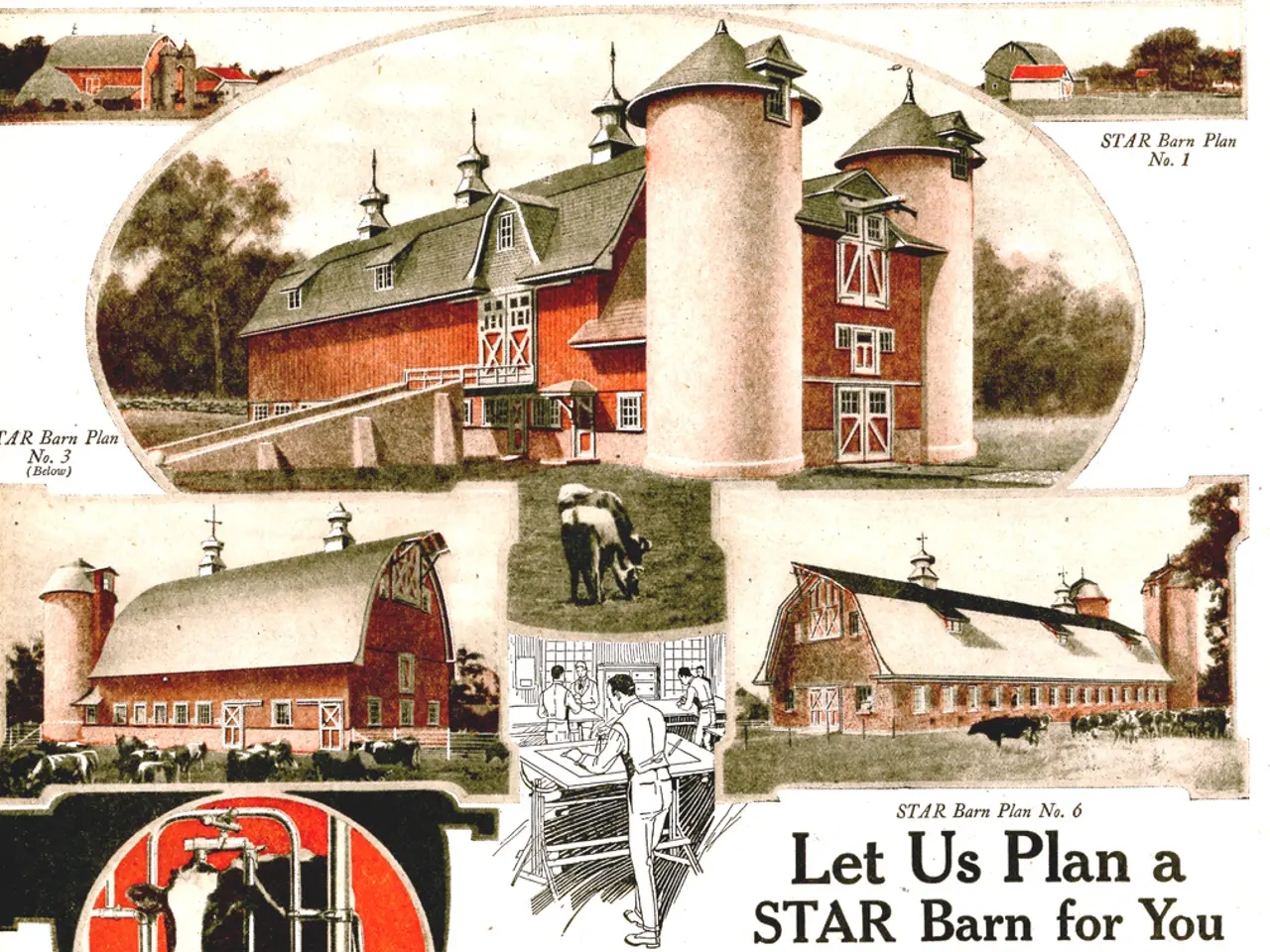Decreasing Numbers: The Ancient Livestock Breeds of Latvia Are Becoming Rarer
Preserving Latvia's Endangered Blue and Brown Cows
In the picturesque Slampe parish of Tukums municipality, farmer Svetlana Sarmule tends to a herd of 30 dairy cows, including around 20 Latvian blue cows. Her barn houses three of these unique creatures, named Cerība, Cielava, and Venta. Svetlana has been breeding blue cows for over 20 years, contributing to the conservation of this precious heritage breed.
Across Latvia, around 700 registered Latvian blue cows reside on approximately 200 farms. This rare breed, known for its distinctive bluish-gray coat found only in Latvia, is one of two endangered farm animal species in the country. The Latvian brown cow, another historic breed, is also listed as endangered, with around 20,000 registered animals.
The decline in the number of Latvian brown cows is a concern, according to data from the Rural Support Service (RSS). The number has significantly dropped over the past five years, from around 44,000 to around 23,000. The RSS, the main institutional body spearheading conservation programs, offers financial and technical aid to farmers to sustain breeding populations, helping to preserve genetic diversity and secure the future viability of these breeds.
Preserving these historic breeds is not just about maintaining agricultural biodiversity but also supporting traditional farming practices suited to local environmental conditions. The high-quality milk produced by these cows is prized, making them an important part of Latvia's cultural and historical heritage.
Farmers like Svetlana are encouraged to participate in breeding and protection efforts. However, Jānis Zadiņš, the owner of another farm that breeds these cows, is reconsidering continuing to breed these particular breeds due to concerns about productivity and competitiveness on his farm.
The development of historic breeds depends on a joint effort of farmers, scientists, and consultants, as well as the industry. Mārtiņš Cimermanis, head of the Rural Advisory Centre, considers the historic breeds of cows to be a valuable genetic resource. Aid alone is not enough to preserve these breeds, and ongoing state support and farmer engagement suggest a commitment to the long-term conservation of Latvian Blue and Brown cows as valuable national genetic resources.
Other breeds like the Latvian Warmblood horse, Latvian white pig, local goat, and dark-headed sheep also benefit from conservation efforts as part of Latvia’s broader strategy to protect native farm animal biodiversity.
Svetlana milks all the cows and feeds the calves. Her neighbor occasionally receives a liter of milk. Svetlana also makes butter and has enough milk for her five children. Despite initial plans for exporting organic products and dairy products, Svetlana's farm has not yet materialized these plans.
Many farms that initially opted for organic farming are switching to conventional farming for economic reasons, including Jānis Zadiņš's farm. This shift underscores the challenges faced by farmers in maintaining traditional breeds while competing in a global market.
As the Latvian government and the farming community work together to preserve these endangered breeds, the future of the Latvian Blue and Brown cows remains uncertain. However, with continued support and dedication, these unique and valuable genetic resources can be safeguarded for future generations.
[1] Rural Support Service (RSS), https://www.ssz.gov.lv/en/ (Accessed August 2025)
The media should highlight the efforts of farmers like Svetlana, showcasing how they contribute to the conservation of endangered Latvian blue cows as part of Latvia's rich home-and-garden lifestyle and cultural heritage. Eu funding for dairy farms could potentially support the breeding and protection of these precious historical breeds, given the importance of maintaining agricultural biodiversity in the eu region.




